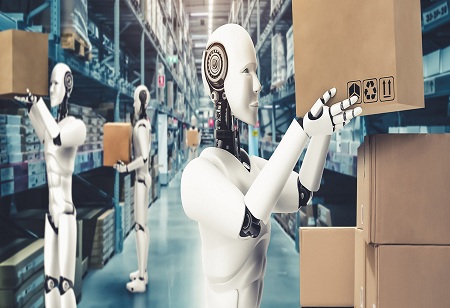
Technological advances are reshaping the environment of modern defence production at an unprecedented rate. Among the cutting-edge developments, robotics stands out as a crucial factor that has transformed a variety of industries, including defence production. The use of robots in defence production processes has increased precision, efficiency, and flexibility.
Robotics, in conjunction with other developing technologies, is being applied throughout the defence value chain. To understand its impact, let us look at the potential of robotics in defence manufacturing.
Precision and Consistency
Precision is critical in defence production, where even little deviations from requirements can have far-reaching effects. Traditional production techniques, while efficient, are prone to human error and variance. This is where robots' revolutionary potential comes into play, bringing unrivalled accuracy and consistency to defence manufacturing.
Robotic systems outfitted with modern sensors and machine vision technologies can precisely assess and quantify components down to the micron level. This degree of precision is practically hard to accomplish by physical effort on a constant basis. Robots can perform tasks with unwavering precision, reducing the risk of defects and ensuring that each piece meets the stringent quality standards required in defence applications, whether it's assembling intricate electronic components, fabricating aerospace structures, or crafting delicate optic systems.
Furthermore, robots can retain this accuracy indefinitely, unaffected by circumstances that would induce weariness or concentration gaps in human labour. This capacity not only improves the end product's quality but also adds to significant cost savings by reducing rework and material waste.
“Emerging technologies in the defence sector encompass a wide range of innovations that have the potential to transform military operations. From unscrewed systems like drones and unscrewed fighting vehicles to advanced AI algorithms and additive manufacturing techniques, these technologies are reshaping the way defence personnel operate, collaborate, and engage with the battlefield.” Says Mr Robert Sutton Managing Director of Mirragin RAS Consulting Australia.
Enhanced Efficiency and Productivity
Efficiency and productivity are essential aspects of defence production because they directly impact a country's capacity to supply vital equipment demands within tight schedules. In this regard, robotic systems usher in a paradigm change, allowing firms to drastically expedite production processes while maintaining quality requirements.
Robotic arms and automated machines may labour around the clock, doing tasks at breakneck speed. Robotic system adoption in processes like welding, machining, and assembling saves cycle times and optimizes resource allocation. In the fabrication of armoured vehicles or aircraft components, for example, robotic welding systems may produce consistent, high-quality welds in a fraction of the time that a human welder would.
Collaborating with human operators, collaborative robots, or cobots, has broadened the field of efficiency enhancement. Cobots may undertake jobs that demand dexterity and precise manipulation in defence production, while people monitor the process and make key choices. This human-robot collaboration boosts productivity and provides for a more simplified production process.
Flexibility and Adaptability
The defence industrial environment is defined by the ongoing change of technology and needs. The capacity to react swiftly to changes is a strategic advantage in such an environment. Robotics excels in this area by providing unrivalled flexibility and adaptability.
Modern robotic systems are built with modular architectures and programming interfaces for quick reconfiguration. This implies that a single robotic cell may be reprogrammed and retooled to execute an entirely different duty, reducing downtime during product line transitions. This versatility is critical in defence production, where unexpected swings in demand or modifications in requirements might occur.
Additionally, a robot exhibits its adaptability with the notion of "lights-out manufacturing." This refers to completely automated manufacturing processes that can run without human involvement, including during non-working hours. This results in a continuous and efficient manufacturing cycle that maximizes productivity while lowering labour costs for defence manufacturers.
The use of robots in defence industrial processes represents a watershed moment in military technology progress. The issues raised in this essay just scrape the surface of robots' possibilities in this arena. Precision, consistency, efficiency, productivity, flexibility, and adaptability all combine to form a manufacturing environment that is not just sophisticated but also sensitive to the ever-changing demands of contemporary defence.
As governments attempt to provide cutting-edge weaponry, vehicles, and equipment to their armed forces, robotics emerges as a force multiplier in the production phase. It increases human capabilities, shortens manufacturing timeframes, and improves overall product quality. However, it is critical to recognize that the incorporation of robotics in defence production also presents obstacles. Include the shortage of experienced robotic programmers and maintenance people, as well as cybersecurity problems in automated systems
The promise of robots in defence production is a bright spot on the horizon. The path to realizing this potential necessitates a healthy combination of human intellect and technology innovation, with the ultimate objective of strengthening national security and defence capabilities in an increasingly complicated environment.
We use cookies to ensure you get the best experience on our website. Read more...